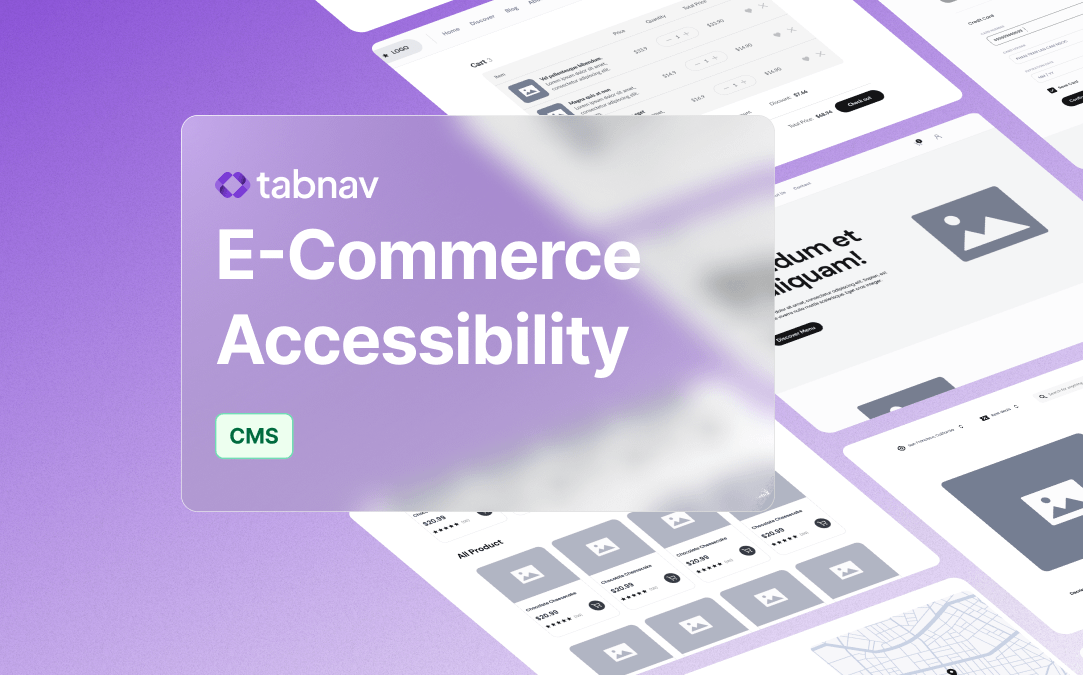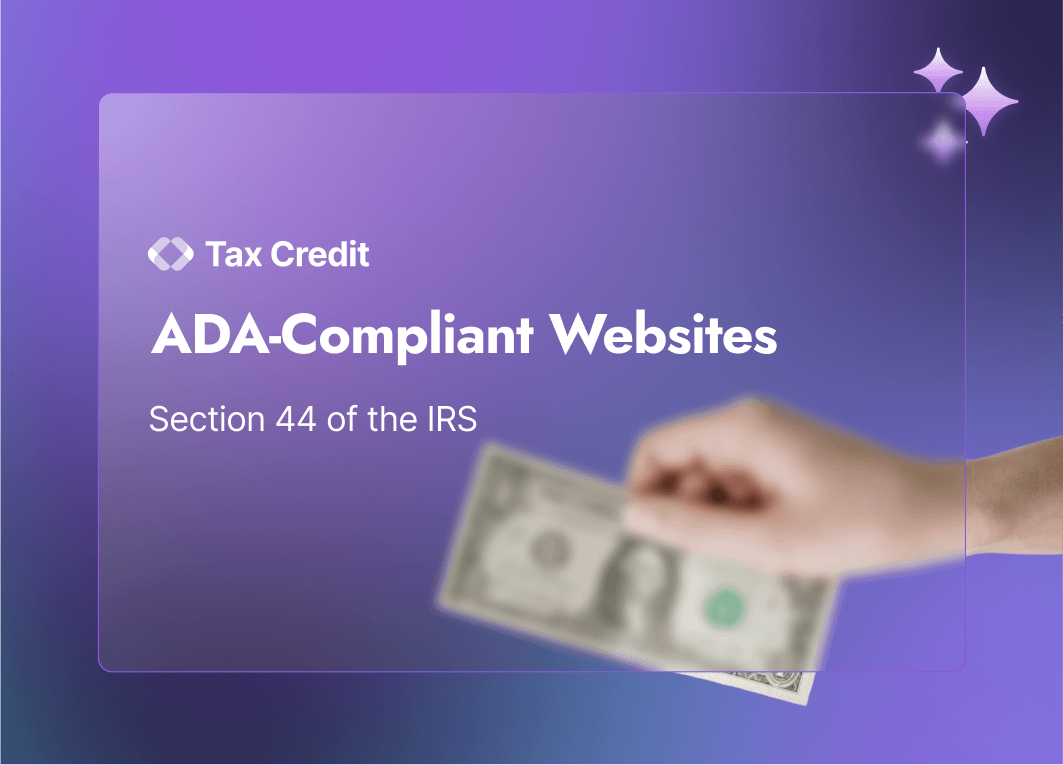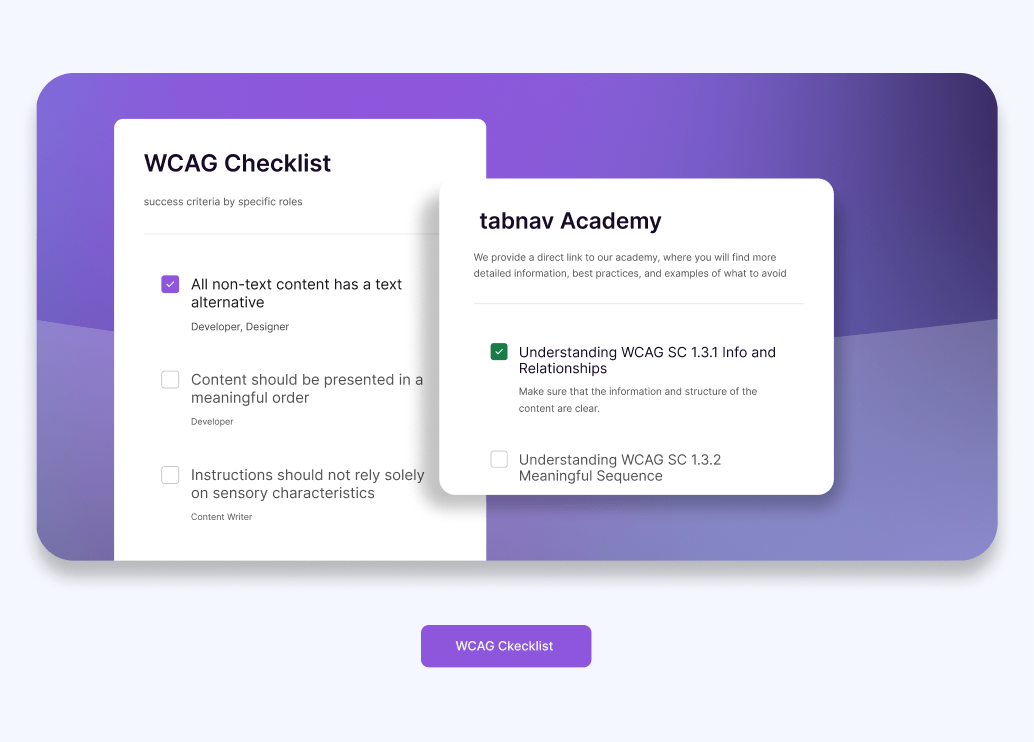Website Accessibility Guide for E-Commerce
May 5, 2024 - Guides & Resources
Adapting Your E-Commerce for Inclusive Accessibility
As the digital landscape continues to grow and change, so do the expectations and regulations that shape it. In today’s online marketplace, ensuring that your e-commerce site is accessible to everyone, including people with disabilities, is not just a legal obligation—it's a crucial part of providing a seamless shopping experience for all your customers. Accessibility goes beyond compliance; it's about creating an inclusive environment where everyone can browse, shop, and engage with your brand effortlessly.
By making your e-commerce site accessible, you're opening the doors to a broader audience, improving user satisfaction, and boosting your business’s reputation. It’s an investment in your customers’ experience that pays off by fostering loyalty and trust. But accessibility isn’t a one-size-fits-all solution. It involves understanding and implementing a wide range of practices that cater to different needs, from visual impairments to mobility challenges.
In this guide, we’ll dive into the essential elements you need to prioritize to ensure your e-commerce platform meets the latest accessibility standards. We’ll cover everything from designing user-friendly shopping carts to creating content that’s easy to navigate for everyone. Whether you’re starting from scratch or looking to refine your existing site, this guide will provide you with the insights and practical steps needed to make your e-commerce site truly inclusive.

10 Key Elements to Prioritize for E-Commerce Website Accessibility
When it comes to e-commerce accessibility, knowing which parts of your website to focus on is like knowing the location of the doors in a physical store. Just as doors are crucial for customers to enter and navigate a store, certain elements of your website are vital for ensuring a smooth and accessible experience for all users. These are the spots where users interact the most, and making them accessible is super important.
-
Shopping Cart
The shopping cart is where all the magic happens. Make sure it’s easy to navigate using a keyboard and works well with screen readers. Clearly label buttons and make error messages helpful so users can complete their purchases without any hassle.
-
Forms
Forms are everywhere in e-commerce, from creating an account to checking out. To ensure all users can interact with your forms smoothly, provide clear labels, instructions, and error messages. Support keyboard navigation and be mindful of features like auto-suggestions, which can sometimes hinder accessibility. Want to dive deeper? Check out our detailed guide on making your forms fully accessible and user-friendly.
-
Pop-Ups
Pop-ups can be tricky for users with disabilities, especially if they can’t be easily dismissed. Make sure pop-ups can be closed with the keyboard and that screen readers can read their content correctly. Avoid automatic pop-ups that might disrupt the user experience.
-
Carousels
Image carousels are super popular but can be a challenge for accessibility. Ensure carousels don’t move automatically more than every 5 seconds without user interaction. For more details, visit the tabnav Academy section on "Understanding WCAG SC 2.2.2 Pause, Stop, Hide." We explain it clearly and provide examples.
-
Product Pages
Product pages are the heart of your e-commerce site, and making them accessible is crucial for reaching all customers. Start by using clear, descriptive alt text for images to ensure that visually impaired users can understand your products. Make product descriptions easy to read by using simple language and organizing information into digestible sections. Ensure that all interactive elements, like buttons and links, are accessible via keyboard and screen readers.
-
Contrast
Proper contrast between text and background is crucial for readability, especially for users with visual impairments. Ensuring your site has enough contrast helps everyone see and interact with content easily. Poor contrast can make it tough to distinguish elements on the page, leading to frustration. For more details, visit tabnav Academy's guide on “Understanding WCAG SC 1.4.3 Contrast (Minimum)”.
-
404 Pages
With so many product pages, changes throughout the year can lead to deleted pages still linked from blogs, ads, or emails. This can land users on a 404 page, so make sure it’s WCAG compliant. Avoid using the "404" title in an image, as that doesn’t meet WCAG standards. For more info, check out "Understanding WCAG SC 1.4.5 Image of Text" on Tabnav Academy.
-
Language Declaration
Ensuring the correct language is displayed on your webpage is key, especially for global e-commerce sites. Use the right language declaration tag for each country on your web pages. For more info, visit Tabnav Academy and explore "Understanding WCAG SC 3.1.1 Language of Page".
-
Keyboard Navigation
Many users rely solely on keyboard navigation. Make sure all elements, especially forms and the navigation bar, can be accessed and navigated using just a keyboard. For more tips, visit tabnav Academy’s guides on "Understanding WCAG SC 2.1.1 Keyboard" and "Understanding WCAG SC 2.1.2 No Keyboard Trap".
-
Responsive Design
Your e-commerce platform needs to be fully responsive, adapting to different screen sizes without losing any vital information. This is crucial for providing a seamless shopping experience across all devices. For more details, visit Tabnav Academy's guide on “Understanding WCAG SC 1.4.10 Reflow”.
Free Website Accessibility Scan
Enter your website URL to get a free, instant accessibility scan with tabnav's checker.
Understanding WCAG and Related Laws
The Web Content Accessibility Guidelines (WCAG) are global rules designed to make websites easier to use for people with disabilities. These guidelines ensure everyone can access online content. WCAG is built around four key principles: perceivable, operable, understandable, and robust.
Many laws and regulations worldwide reference WCAG as the standard for compliance. Important laws include the Americans with Disabilities Act (ADA) in the U.S., the Accessibility for Ontarians with Disabilities Act (AODA) in Canada, and EN 301 549 in Europe. Following these laws usually means adhering to WCAG guidelines, especially at Level AA, which addresses the most critical accessibility issues.
Steps to Ensure Accessibility
To ensure your e-commerce business is accessible, consider taking the following steps:
-
Update Your Digital Content: Make sure all content complies with WCAG standards, including alt text for images and captions for videos.
-
Implement Inclusive Design Practices: Add accessibility features to your website’s layout and user interface.
-
Train Your Team: Ensure your customer service team knows accessibility best practices.
-
Stay Informed: Keep up with the latest developments in accessibility standards and regulations.
There are many other sections and elements to cover for full compliance, but this blog summarizes the most common accessibility barriers we’ve found. Addressing these key elements will help you lay a strong foundation for making your e-commerce site accessible to everyone.
If you have any questions or need guidance on making your e-commerce site more accessible, we're here to help. At tabnav, our team has the expertise to tackle even the most challenging accessibility issues. Reach out to us today—we’re just a click away!





